Zastanawialiście się kiedyś, co jest najważniejsze w fotografii kulinarnej? Pomijając apetyczne jedzenie, które gra tu pierwsze skrzypce, to dla mnie są dwie najbardziej istotne kwestie – światło i kolory. Umiejętnie nimi operując i rozumiejąc ich wpływ na efekt, jaki chcemy uzyskać możemy stworzyć fantastyczne zdjęcia. Dzisiaj skupię się na kolorach i opowiem Wam, dlaczego warto je lepiej zrozumieć.
Dlaczego kolory są tak ważne?
Odpowiedni wybór kolorów, których użyjemy na zdjęciu decyduje o tym, czy odbiorca będzie patrzył na nie z przyjemnością – czy zdjęcie nie będzie za mdłe, czy nie będzie krzyczało, czy nie będzie od samego patrzenia na nie bolała głowa. Kolory mają podkreślać głównego bohatera (jedzenie), a nie odciągać od niego uwagę. Możemy wykorzystać je po to, aby opowiedzieć taką historię, jaką chcemy. Dzięki wyborowi tła i akcesoriów w danej kolorystyce możemy pokazać na zdjęciu wiosnę, zimę czy jesień. Możemy zasugerować czy plan został sfotografowany wczesnym rankiem czy wieczorem, przy świetle świec. Możemy nadać zdjęciu odpowiedni klimat – rustykalny, delikatny czy nowoczesny. Możemy zdecydować czy fotografia ma być bardziej radosna czy dramatyczna. Kolory są naprawdę ogromnie istotne, dlatego warto nauczyć się z nich korzystać.
Jak dobierać kolory na zdjęciu?
Od czego zacząć? Od zastanowienia się, co chcemy uzyskać. Zanim zaczniemy dobierać tła i akcesoria, pomyślmy, jaki klimat ma mieć zdjęcie. Jeżeli chcemy uzyskać radosny, wiosenny obraz śniadania – celujmy raczej w jasne, pastelowe kolory. Jesienna kolacja? Możemy wybrać ciepłe, ciemniejsze odcienie. Azjatycki klimat? Tu może pasować zimna szarość i beton. Elegancka przerwa kawowa – możemy celować np. w marmur i delikatne, nienarzucające się kolorami dodatki. Fast food – może spróbujmy zaszaleć z intensywnymi barwami? Nie ma tutaj żadnych ograniczeń, to Ty decydujesz, co chcesz uzyskać – ale musisz to wiedzieć, zanim zaczniesz stylizować plan.
Następnie skupiamy się na jedzeniu, które będziemy fotografować. Jaką będzie miało barwę i fakturę? Czy stylizując je użyjemy wielu kolorów czy będzie raczej jednolite kolorystycznie? Im bardziej wielokolorowe danie, tym mniej używajmy innych kolorów na zdjęciu – w przeciwnym wypadku możemy uzyskać bardzo krzykliwą fotografię, na której główny bohater nawet nie rzuca się w oczy.
Uważajmy jednak, gdy fotografujemy bardziej jednolite kolorystycznie danie np. zupę czy gulasz. Możemy tutaj bardziej poszaleć z kolorami, ale nie zapominajmy o tym, że wciąż najbardziej ma się wyróżniać nasza potrawa. Możemy użyć nawet bardzo krzykliwego koloru tła i kilku dodatków, pod warunkiem, że danie będzie wciąż na pierwszym planie.
Samo stylizowanie danie ma już ogromne znaczenie pod kątem kolorystycznym. Dobierając dodatki do stylizacji – zioła, kwiaty, owoce, ziarna musimy zwracać uwagę, czy pasują do siebie, do potrawy i czy nasza stylizacja planu się z tym nie gryzie.
Generalnie dobrą zasadą jest trzymanie się maksymalnie 3-4 kolorów na zdjęciu. Jeżeli użyjemy ich więcej ryzykujemy już uzyskanie chaotycznego, bałaganiarskiego odbioru fotografii, a tego przecież nie chcemy.

źródło: Dorota Domino
Skąd wiedzieć czy te kolory do siebie pasują?
Wiemy już o czym myśleć, dobierając kolory, ale skąd mamy wiedzieć, jak je wybrać i które kolory do siebie pasują? Niektórzy z nas po prostu to widzą, niektórzy nabierają tej umiejętności z czasem i potrzebują nieco praktyki. Zwłaszcza na początku bardzo przydatne jest tzw. koło barw. Dzięki niemu będziemy pewni czy kolory, których używamy ze sobą współgrają.

źródło: Dorota Domino
Jak korzystać z koła barw? Znajdujemy kolor, który ma nam dominować – zwykle najłatwiej będzie zacząć od barwy jedzenia, które fotografujemy. Mamy teraz kilka możliwości do wyboru.
Jeżeli chcemy uzyskać monochromatyczne zdjęcie – wybieramy odcienie położone na tej samej linii od środka do krawędzi koła, co wybrany przez nas kolor. Będzie harmonijnie i spokojnie.
Możemy też użyć kolorów harmonijnych – to te, które mieszczą się tuż obok wybranego koloru, po lewej i prawej. Nie będą się ze sobą gryźć i też pozwolą stworzyć harmonijny obraz (np. żółty, pomarańczowy i zielony).
Jeżeli zależy nam na uzyskaniu kontrastu i wyróżnieniu dania jeszcze bardziej, poszukajmy barw dopełniających – to te, które położone są w kole naprzeciwko wybranego przez nas odcienia np. pomarańczowy i niebieski (Co powiecie na sernik mango z borówkami albo soczyste cytryny na niebieskim tle? Widzicie to?).
Analizując koło barw możemy też stosować inne schematy – triadę (zestawienie trzech kolorów w równej odległości na kole barw), tetradę (zestawienie złożone z dwóch par kolorów dopełniających), ale tutaj wchodzimy już w ryzyko użycia na jednym zdjęciu zbyt dużej ilości barw. Jeżeli jednak zależy Ci na takim efekcie – działaj!
Z kolei czarny i biały, a w praktyce także beże i szarości to kolory, które dopełniają każdy kolor widoczny na kole barw, więc możemy je bezpiecznie używać w zasadzie wszędzie. Fajnym zabiegiem jest zastosowanie w stylizacji planu samych kolorów achromatycznych (biele, szarości), a użycie intensywniejszych kolorów tylko w daniu. Świetnym pomysłem jest też stworzenie zdjęcie monochromatycznego – czyli wszystko mamy w kilku odcieniach tego samego koloru.
Koło barw nie jest sztywnym wyznacznikiem, ale ułatwieniem w pracy, z którego warto korzystać. Ostatecznie i tak będziemy kierować się własnym poczuciem estetyki, zwłaszcza na początku naszej przygody z fotografią kulinarną, koło kolorów może nam znacząco pomóc. Nie bójmy się go!

źródło: Dorota Domino
Najważniejsza jest jednak praktyka i nie bagatelizowanie znaczenia kolorystyki w fotografii kulinarnej. Jeżeli nie mamy pewności, pamiętajmy, że mniej to więcej. Bardzo istotne jest też dopasowanie odpowiedniego balansu bieli, żeby kolory, których używamy nie były przekłamane. Nie panikujmy, jeśli po zgraniu zdjęć na komputer okaże się, że te kolory jednak do siebie nie pasują – zawsze możecie je odmienić w Lightroomie albo Photoshopie. 😉
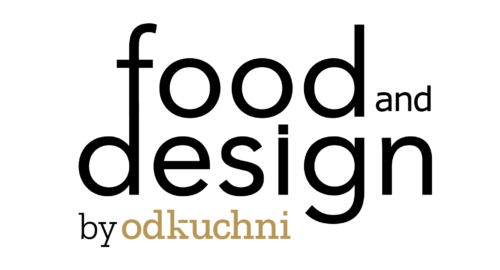

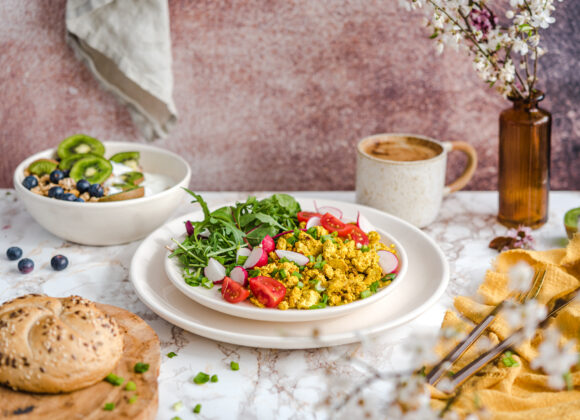

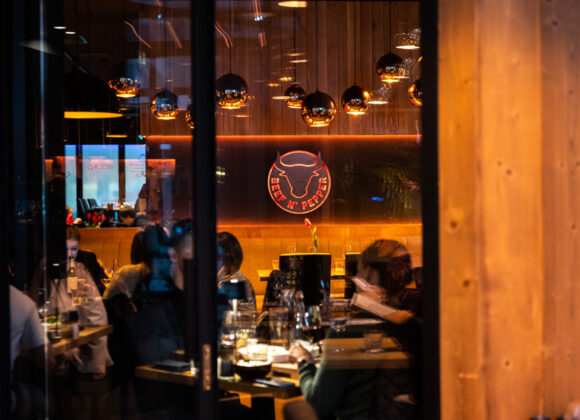
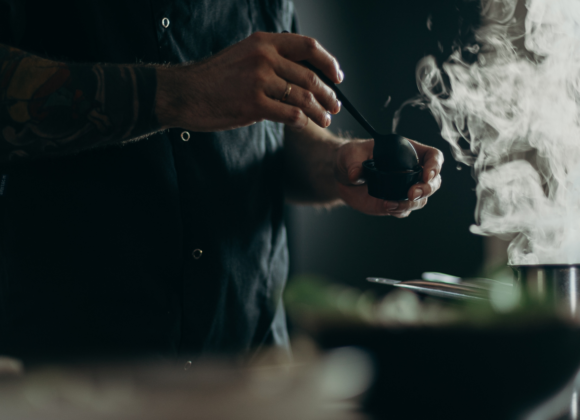
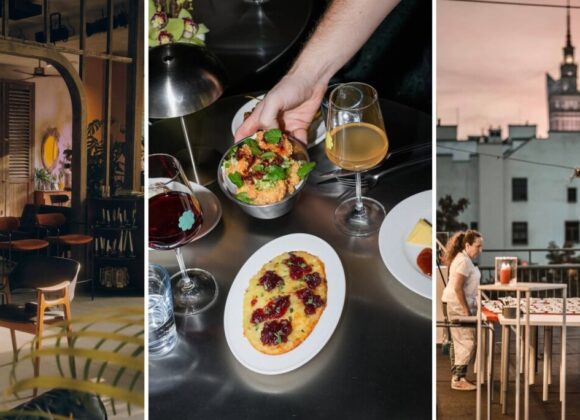
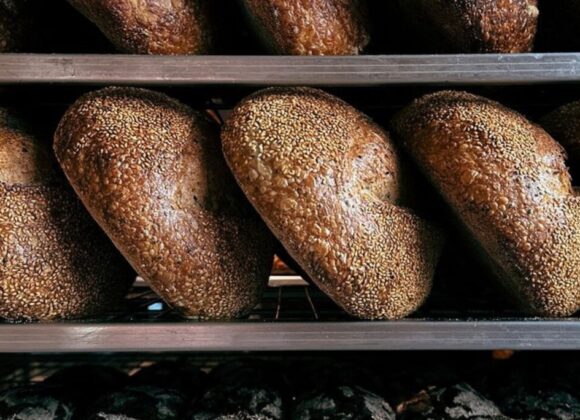


 Młodszy specjalista ds. komunikacji marketingowej i PR.
Młodszy specjalista ds. komunikacji marketingowej i PR.


 Absolwent Uniwersytetu Warszawskiego oraz Szkoły Głównej Gospodarstwa Wiejskiego. W branży HoReCa od ponad 10 lat. Przez lata związany z Grupą Trip, Sobienie Królewskie Golf and Country Club oraz restauracją Florentin w Warszawe.
Absolwent Uniwersytetu Warszawskiego oraz Szkoły Głównej Gospodarstwa Wiejskiego. W branży HoReCa od ponad 10 lat. Przez lata związany z Grupą Trip, Sobienie Królewskie Golf and Country Club oraz restauracją Florentin w Warszawe. Absolwentka Wydziału Architektury Politechniki Warszawskiej na kierunku Architecture for Society of Knowledge oraz Komunikacji Wizualnej na Politecnico di Milano. Specjalistka od budowania nastroju. Doświadczenie zdobywała w kraju i zagranicą podczas licznych warsztatów międzynarodowych (Sevilla, Lizbona, Florencja), stypendium na La Sapienza (Rzym) oraz pracując m.in. w Carmi e Ubertis i ADM Milano.
Absolwentka Wydziału Architektury Politechniki Warszawskiej na kierunku Architecture for Society of Knowledge oraz Komunikacji Wizualnej na Politecnico di Milano. Specjalistka od budowania nastroju. Doświadczenie zdobywała w kraju i zagranicą podczas licznych warsztatów międzynarodowych (Sevilla, Lizbona, Florencja), stypendium na La Sapienza (Rzym) oraz pracując m.in. w Carmi e Ubertis i ADM Milano.








 Menedżer z wieloletnim doświadczeniem w branżach kosmetycznej, spożywczej, dziecięcej. W trakcie swojej kariery związany z firmami takimi jak: L’Oreal, Samsung, Danone-Nutricia, Unilever. W ciągu swojego życia zawodowego odpowiadał między innymi za rozwój sprzedaży i contentu eCommerce w Polsce i krajach Europy Środkowo-Wschodniej.
Menedżer z wieloletnim doświadczeniem w branżach kosmetycznej, spożywczej, dziecięcej. W trakcie swojej kariery związany z firmami takimi jak: L’Oreal, Samsung, Danone-Nutricia, Unilever. W ciągu swojego życia zawodowego odpowiadał między innymi za rozwój sprzedaży i contentu eCommerce w Polsce i krajach Europy Środkowo-Wschodniej. 

























































